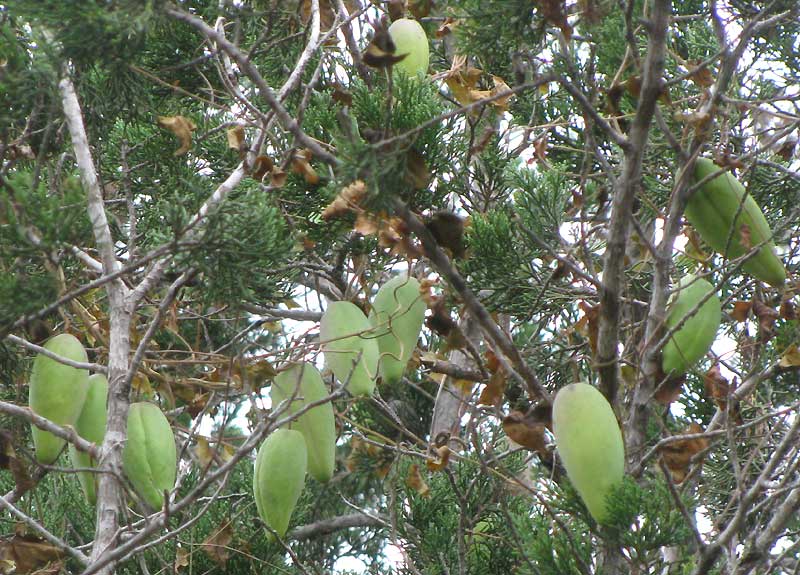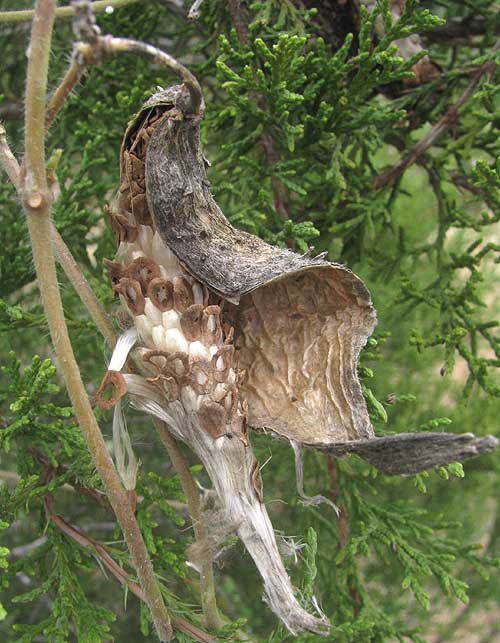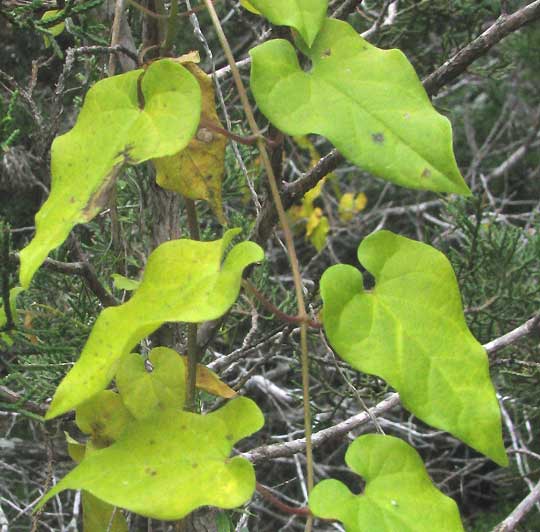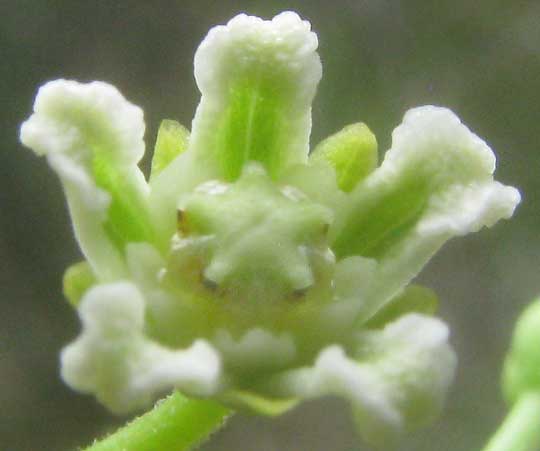Excerpts from Jim Conrad's
Naturalist Newsletter

from the December 9, 2012 Newsletter issued from the valley of the Dry Frio River in northern Uvalde County, southwestern Texas, on the southern border of the Edwards Plateau; elevation ~1750m (~5750 ft); N29.62°, W99.86°; USA
TALAYOTE VINE FRUITING
Nowadays often you see suspended in trees green pods on drying-up vines such as those shown above. The pods are about three inches long (8cm) and when the weather turns warm and dry the pods split open and release small flat seeds topped with long, white hairs that serve as parachutes for enabling the seeds to disperse on the wind. A pod that has split open but failed to release its seeds -- apparently because something ate the center of each seed -- can be seen below:

Seeing the pods and parachuted seeds, wildflower admirers will recognize the plant as one of the vining "climbing milkweeds." Milkweeds generally bear opposite leaves -- two leaves per stem node -- and you can see that that's the case with this vine's leaves below:

Moreover, if you tear a leaf, it'll issue white, milky latex, as milkweeds tend to do.
When I first saw these vines I assumed that they were Sand Vines, Cynanchum laeve, commonly seen in much of eastern North America. However, gradually it dawned on me that the pods were a bit plumper than what I'm used to, so I looked into the matter.
It turns out that the vines here are the closely related CYNANCHUM RACEMOSUM*, in the US found only in Texas, and commonly called Talayote. The name, which looks to me as if it's from Nahuatl, an indigenous language in central Mexico, reflects the fact that mainly it's a tropical American species, found throughout Mexico and much of Central America as well as northern South America.
from the September 22, 2013 Newsletter issued from the Frio Canyon Nature Education Center in the valley of the Dry Frio River in northern Uvalde County, southwestern Texas, on the southern border of the Edwards Plateau; elevation ~1750m (~5750 ft); N29.62°, W99.86°; USA
TALAYOTE FLOWERING
Nowadays Talayote is producing racemes of yellowish-white flowers, as shown below:

The flowers are very distinctively milkweed-type, as shown below:

Notice how between the five white-fringed, greenish corolla lobes arise five shorter, pale, three-toothed items. These constitute the corona, something seen in milkweed flowers that few other flower types have. Also, in the blossom's center, there's a complex-looking thing unlike the usual stigma, style and ovary. That's the gynostegium, consisting of a fused staminal column (grown-together stamens) and the "stylar head," which is part of the female pistil. I provide an illustrated introduction to milkweed flowers at http://www.backyardnature.net/fl_milkw.htm.
Talayote's leaves are somewhat distinctive, too. They arise two to a stem node (they're "opposite"), and are more or less heart-shaped, with a flat-bottomed sinus beneath the lobes, plus often they're splattered with white latex, or "milkweed milk," as shown below:
